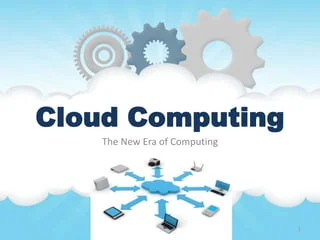Fundamentals of Serving Safe for Food Handlers
Master the Essentials of Food Safety and Hygiene with the …
What you'll learn
Module 1: The Basics of Foodborne Illnesses and Prevention
Learn the essential facts about foodborne illnesses, including the most common pathogens like Salmonella, E. coli, and Listeria. Understand how food contamination occurs and the practices that can prevent it from happening in your kitchen.
a) Sub-Module 2: Preventing Cross-Contamination in Food Preparation
Gain in-depth knowledge of cross-contamination, one of the leading causes of foodborne illnesses. Learn how to separate raw and cooked foods, store ingredients safely, and maintain cleanliness in the kitchen to avoid the spread of harmful bacteria.
b) Sub-Module 3: Safe Storage and Temperature Control of Food
Discover the importance of correct food storage techniques, including the use of proper temperatures for refrigeration and freezing. Learn about the danger zone for bacterial growth and how to avoid it by following industry-standard storage practices.
c) Sub-Module 4: Thawing and Cooking Food Safely
Explore the approved methods for thawing food safely, such as refrigeration, cold water, and microwave techniques. Understand the proper internal temperatures for cooking various foods to eliminate harmful pathogens and ensure food safety.
d) Sub-Module 5: Personal Hygiene and Its Role in Food Safety
Dive into the essential hygiene practices required for all food handlers. Learn how regular handwashing, proper attire, and avoiding direct food contact when ill contribute to preventing contamination.
e) Sub-Module 6: Introduction to ServSafe Certification
Get introduced to the ServSafe Certification program, a globally recognized qualification in food safety. This module covers the key areas tested in the certification exam, including personal hygiene, food safety procedures, and allergen management.
f) Sub-Module 7: Global Standards for Food Safety
Understand the global efforts to ensure food safety, including the role of international organizations like the World Health Organization (WHO) and the Food and Agriculture Organization (FAO). Learn how international standards like HACCP ensure the safe handling, preparation, and distribution of food worldwide.
Cyber Security Course For Beginners
In an increasingly digital world, the need to protect sensitive …
What you'll learn
The fundamentals of cyber security and why it's crucial in today's digital world.
How to recognize common cyber threats like phishing, malware, and hacking attempts.
Strategies for protecting sensitive data and securing networks from potential threats.
Advanced techniques to prevent and mitigate cyber attacks, including firewalls, encryption, and secure coding practices.
Legal and ethical considerations in cyber security and the responsibilities of protecting data.
AI and Machine Learning Course
Unlock the potential of Artificial Intelligence – AI and Machine …
What you'll learn
The fundamentals of AI and machine learning and how they can boost productivity.
Practical applications of AI in daily workflows and business processes.
How to harness AI tools to automate tasks and enhance efficiency.
Strategies for integrating AI into your business or personal projects to optimize results.
A comprehensive understanding of machine learning principles and their role in AI development.
Bootstrap Course | The Complete Web Development With Bootsrap
Master the art of front-end web development with Bootstrap Course …
What you'll learn
How to set up and use Bootstrap to build responsive websites.
Understanding the Bootstrap grid system and responsive design principles.
Adding and customizing components such as buttons, forms, and navigation bars.
How to integrate JavaScript plugins for enhanced website functionality.
Creating visually appealing and user-friendly interfaces using pre-built components.
Best practices for customizing Bootstrap to meet your project needs.
Optimizing websites for mobile, tablet, and desktop devices.
Cloud Computing Course
Gain a comprehensive understanding of cloud computing through this detailed …
What you'll learn
The difference between cloud computing and cloud storage.
How cloud computing works and its various applications.
Key benefits and potential risks associated with using the cloud.
How to choose the best cloud service based on your needs.
The safety and security measures involved in cloud computing.
Who holds responsibility in a cloud computing setup.
An overview of top cloud storage services.
The Data Science Course 2024: Complete Data Science Bootcamp
Master the field of data science with the the Data …
What you'll learn
The core principles and tools used in data analysis and machine learning.
Fundamentals of probability, including combinatorics, Bayesian inference, and probability distributions.
Master descriptive and inferential statistics, hypothesis testing, and practical statistical applications.
Introduction to Python, the most widely used programming language in data science.
Real-world applications of data science techniques to solve complex problems.








